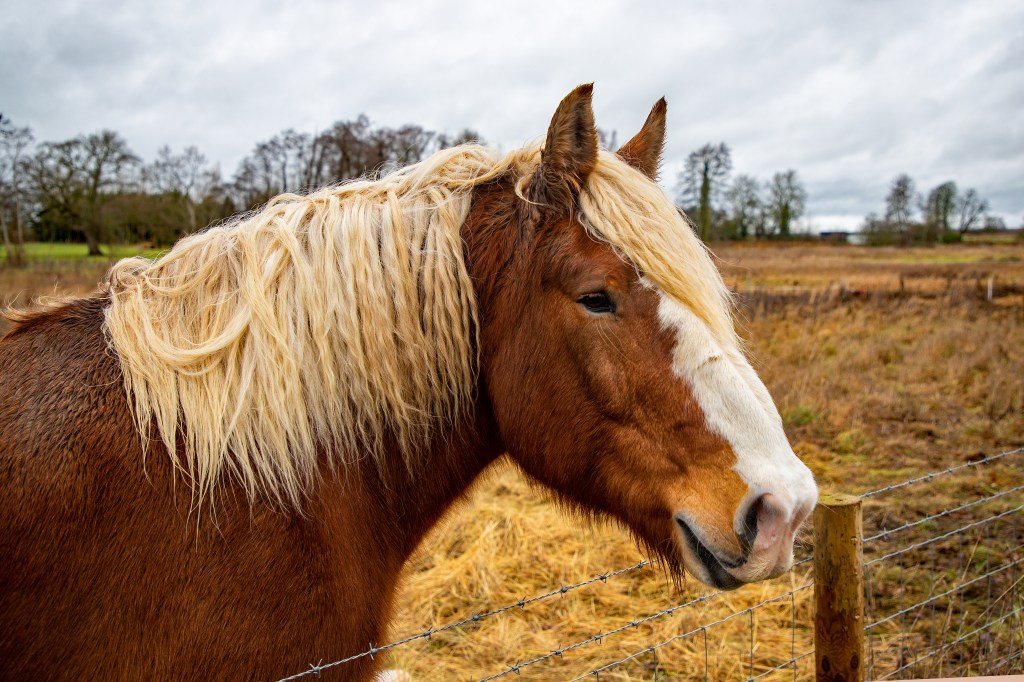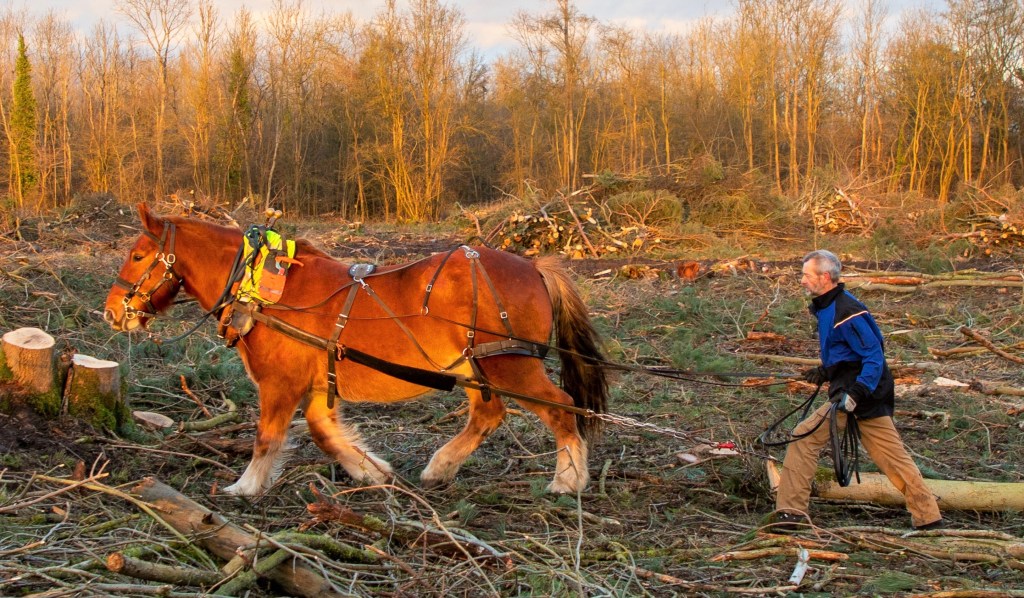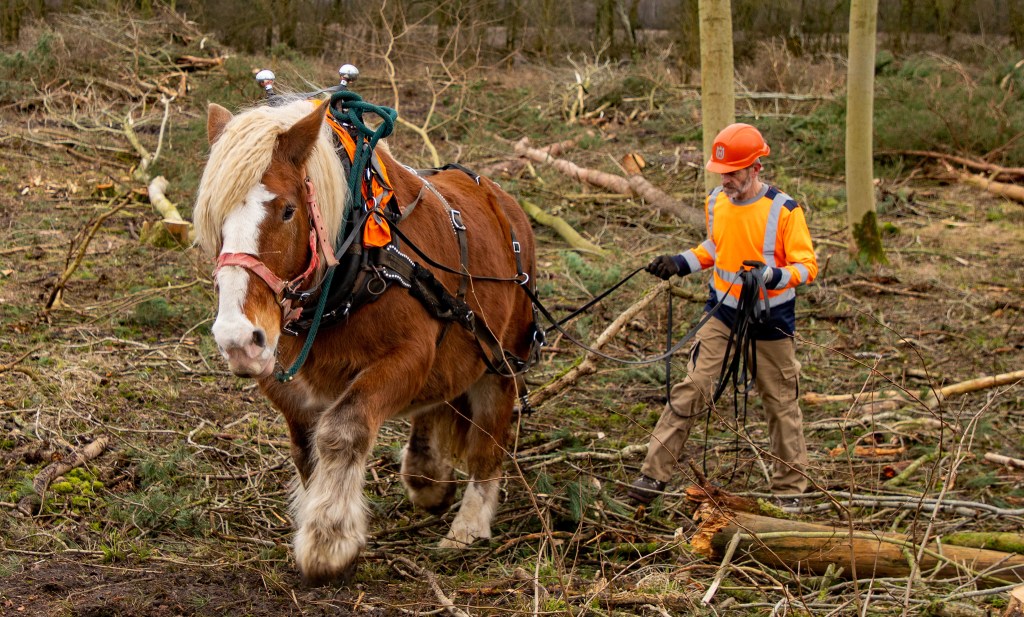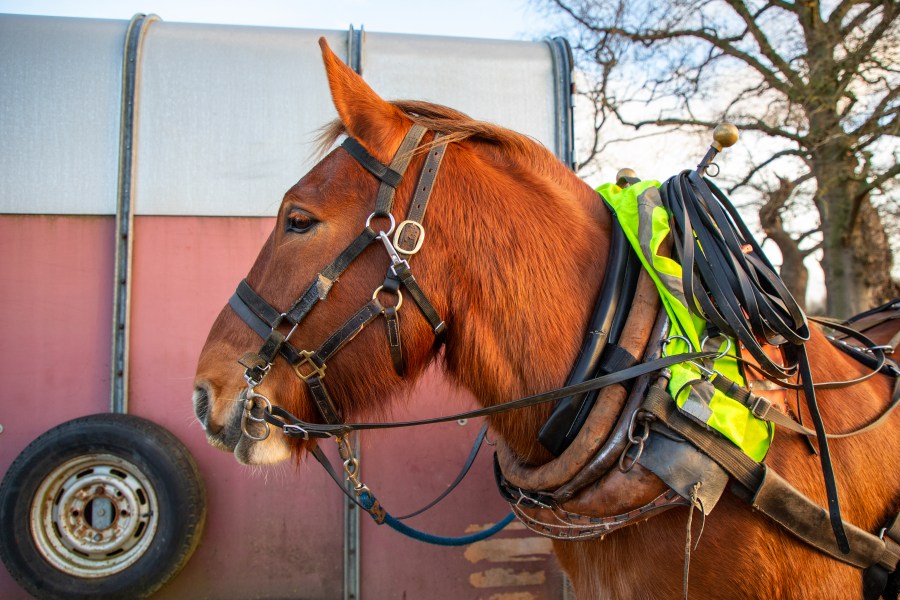A pair of rare breed horses are helping to repurpose a 50-year-old pine plantation in historic parkland to improve the habitat for birds and butterflies.
The horses – a Suffolk Punch and a partbred Ardennes Comtois – are working at the National Trust’s Oxburgh Estate in Norfolk. The pair will help make space for native broadleaf trees and create new wildlife habitats by opening up the area’s dense canopy and increasing plant biodiversity.
Using horses and specialist equipment to drag the pine logs out of the plantation ensures minimal disruption to the soil and wildlife located in the current pine plantation, as their unshod hooves allow for a less invasive distribution of weight compared to heavy logging machinery.

The partbred Ardennes Comtois at Oxburgh Hall, Norfolk. Credit: National Trust Images, Mike Selby
The area of the pine plantation, which was planted in the 1970s for timber production, will be repopulated with native mixed broadleaves including hazel, oak, walnut, and sweet chestnut to increase the woodland’s resilience to climate change and disease, helping to lessen the risk of trees being wiped out by one single illness and preventing severe damage like that caused by ash dieback.
“This is a crucial time for us to double down on our parkland conservation efforts,” said Tom Day, the National Trust’s Area Ranger for Oxburgh Estate. “Right now, the area of the pine plantation is severely lacking in biodiversity and contains 50 per cent less wildlife than in the rest of our woodlands.
“By repopulating it with mixed broadleaf trees, we not only increase the structural diversity of the woodlands which will help maintain them for the long-term, but also vastly improve the quality of the habitat to attract more species and more diverse wildlife.

The Suffolk Punch pulls a log. Credit: National Trust Images, Mike Selby
“In other parts of our parklands, we are already seeing the positive effects of this kind of work in the form of dark green fritillary and silver washed fritillary butterfly sightings. As we are able to open up the dense canopy of the woodland allowing light onto the woodland floor, such sightings will become increasingly common, and with some luck we might even be able to spot purple emperor butterflies in the future.”
Suffolk Horses, also known as the Suffolk Punch, are native to the region, and is one of only four English breeds of heavy horse bred specifically for ploughing and pulling loads. However, due to the mechanisation of farming, the horses numbers rapidly declined in the twentieth century and with less than 500 registered in the UK today. They are classed as critically endangered by the Rare Breeds Survival Trust and listed on the priority watchlist.
“Including a Suffolk Horse in the management of the property’s woodlands the project also serves as an important contribution to contemporary conservation efforts for this rare breed and mirrors how such work would have been carried out, as long as 400 years ago,” added Mr Day.

The parbred ardennes comtois cross joins the Suffolk Punch. Credit: National Trust Images, Mike Selby
Lead image of the Suffolk Punch at Oxburgh Hall, Norfolk. Credit: National Trust Images, Mike Selby
Check out our subscription offer









